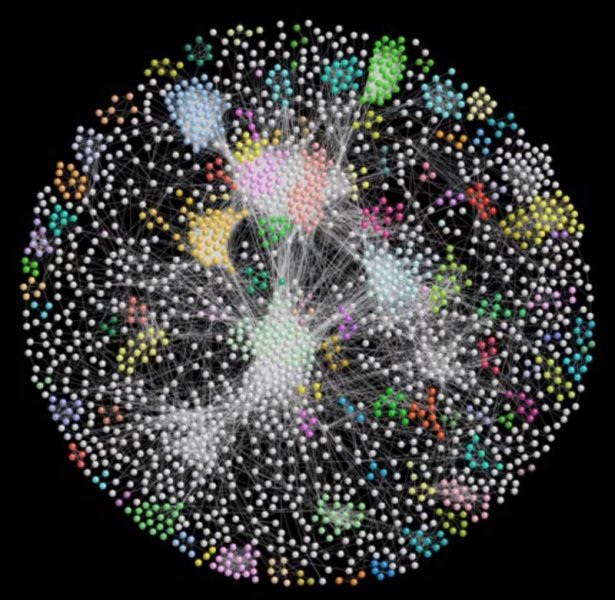Proteins interact with multiple other proteins while carrying out their specific functions and the study of these protein-protein interactions (PPIs) is essential to further our understanding of biochemistry. The advent of new, elegant methodologies has allowed us to identify these protein interaction networks on an organismal level. We have come a long way in the investigation of PPIs, but what does this massive compilation of PPI data truly mean?
Omnipresent and omnipotent: proteins are everywhere and catalyze almost all living processes. The entire animal world, ranging from microbes to human beings, are constituted largely of proteins. A Biochemistry 101 class would define proteins, as compounds composed of carbon, hydrogen, oxygen and nitrogen, which are arranged as strands of amino acids. Together, these simple chemical compounds are one of the most important workhorses in living cells. Beyond this 101 definition, however, lies an endlessly complex field which we’re growing to understand little by little.
Protein-Protein Interactions
Proteins can interact with one another via beautifully regulated mechanisms in order to catalyze the reactions that make biology happen. Protein-protein interactions (PPI) add an extra layer of complexity to the functional analysis of proteins. Despite this, the identification of these biological networks is vital to understand the living cell and its intricacies.
Over the last few decades, the publication of the human genome and developments in the field of proteomics have added to our understanding of protein-protein interactions. Guaranteed high-throughput experimental methods, such as two-hybrid systems, mass spectrometry, phage display, and protein-chip technology, in recent years have enhanced the available PPI data.
Applications, Challenges, & Innovations
The ultimate applications of these advances are wide ranging and include everything from identification of drug targets to enhanced biofuel production, clearly making them of significant value to the research community and the public-at-large. However, the sheer volume of data produced by PPI experiments can be intimidating to researchers and separating the signal from the noise poses not just a challenge to laboratory validation but also to the computational analysis of available PPI data.
The massive quantities of PPI data being generated on a steady basis has led to the construction of biological databases, for the efficient organization and processing of this information.
Examples of these databases include:
- BioGRID (Biological General Repository for interaction datasets)
- STRING (Search Tool for the Retrieval of Interacting Genes/Proteins)
- iHOP (Information Hyperlinked over Proteins)
- HPID (Human Protein Interaction Database)
Together, these popular resources are making it more efficient and more convenient for researchers to solve the mysteries of protein structure and function.
The Impact of Biological Databases
Recently a research group from Germany, used a creative proteomic approach to not just detect protein-protein interactions, but also characterize the strength of these interactions as well as their abundance in the cell (Hein et al., 2015). The different types of tools and databases of PPI networks available to us in recent times, also allow the identification of clinically significant interactions. For instance, in a recent publication (Lecca and Re, 2015), a novel algorithm was used to improve the biological interpretability of PPIs in order to detect differentially active cellular processes in biological datasets from patients with colorectal cancer.
The potential of PPI datasets is immense, and a tight coordination between experimental and computational analysis is required to fully harness the power of this knowledge. Identification of both stable and transient protein-protein interactions will allow us to truly understand the dynamics of crosstalk occurring inside the living cell. While available methods are unable to predict interactions with 100% accuracy, the current advances in our organization and analysis of PPIs indicate that we are truly on the right track for understanding what makes biochemical processes tick.


